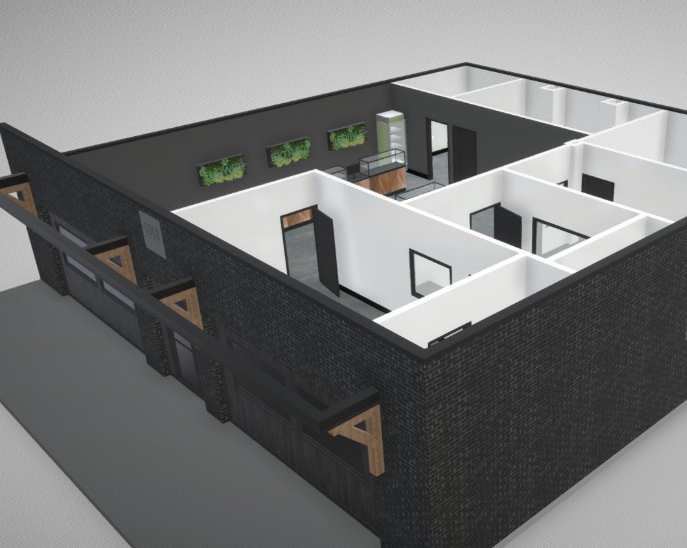Bodega-style dispensaries are flipping the script on how customers buy weed, and the numbers say it’s working
Step aside, glass counters and waiting rooms. A new kind of cannabis store is catching on fast — and it’s looking a lot more like your local corner shop.
Instead of customers having to chat with a budtender just to see a product, they’re now grabbing jars off shelves, reading the labels, and deciding on their own terms. Retailers say it’s making a big difference — not just in vibes, but in profits too.
A Retail Rethink That’s Less ‘Dispensary,’ More ‘Everyday Shop’
In Phoenix, Arizona, Verano Holdings has just rolled out something they’re calling a “bodega-style” cannabis store. And no, it’s not just a gimmick.
The Zen Leaf Phoenix-Cave Creek store is set up to feel like an ordinary shop. No counters. No waiting. You walk in, browse the shelves, grab what you want, and head to checkout. Pretty simple.
Company execs say the idea is to take the pressure off customers. Let them move at their own pace. Let them actually read the label without feeling like they’re holding up a queue. And guess what? It’s working.
People are buying more — and not just by chance.

Why This Model Might Be the Future
This isn’t just about creating a vibe. It’s a direct response to how modern consumers want to shop.
Younger customers, especially, are used to retail experiences where independence matters. Think Apple stores. Think self-checkouts. Think Amazon Go. Cannabis is catching up.
In a typical dispensary, the process can feel awkward. You’re paired with a budtender, and sometimes the pressure to choose fast or ask the right questions can ruin the experience. That pressure? Gone.
Verano’s team says letting customers read the THC content or terpene breakdown quietly on their own leads to better decisions — and more confidence at checkout.
And it’s not just about more information. It’s about control. That freedom to pick up a product, turn it around, and really consider it — that’s something cannabis shoppers haven’t always had.
What the Numbers Are Saying (Yes, They Matter)
Alright, let’s get into some numbers — because vibes are nice, but money talks.
Sales data from Zen Leaf’s new layout shows an increase in both volume and average ticket size within the first few weeks. While Verano hasn’t released full public figures, internal sources confirmed “meaningful” growth in consumer purchases compared to the traditional model.
Here’s a quick comparison snapshot from an internal report viewed by MJBizDaily:
| Store Model | Average Basket Size | Dwell Time | Repeat Visits (30 Days) |
|---|---|---|---|
| Traditional Counter | $64.20 | 6 min | 1.8 |
| Bodega-style (Zen Leaf) | $82.75 | 11 min | 2.6 |
That jump in basket size? Not minor. That increase in time spent in store? Also key.
This one’s worth repeating: more time browsing = more items in the basket. It’s retail 101.
Customers Want Freedom, Not Friction
There’s also a psychological factor at play here. Nobody loves being watched while they shop. And cannabis, for many, is still a personal thing.
Retailers say customers feel more relaxed when they don’t have to explain every choice or ask about potency aloud. They can take their time, compare, and even enjoy the experience.
• A recent survey by Brightfield Group found that 63% of cannabis consumers prefer self-directed shopping over employee-led consultations.
That’s not a small number.
In fact, it lines up with broader retail trends. Across industries, customers are leaning into autonomy — from fast fashion to fast food. Cannabis is just catching up with that curve.
And once they taste that freedom, they don’t go back.
Budtenders Still Matter — But Their Role Is Shifting
This doesn’t mean the end of budtenders. Far from it.
At Zen Leaf, staff are still there — just in a more consultative role. Think of them like sommeliers. They’re available, but not hovering.
They help when asked. They answer the detailed questions. They offer pairing tips or deeper info. But they’re not controlling the experience.
And that shift is subtle, but powerful. Instead of selling, they’re supporting. That makes a difference.
Customers don’t want to feel pitched to — they want to feel informed. And that’s what this new model allows.
What This Means for the Industry
Could this change the way cannabis is sold across the US? Quite possibly.
With competition heating up, retailers are being pushed to rethink every square inch of the dispensary experience. And if letting customers shop like they would at a grocery store increases both satisfaction and spending, it’s going to be hard to ignore.
In fact, some analysts are already predicting a wave of remodels in the next 12–18 months.
“Customer empowerment is one of the biggest retail drivers of the past decade,” says Emily Paxson, a retail analyst with Cannlytics. “Cannabis was behind on this, but that’s starting to shift — and fast.”
Stores that feel like stores are working better than ones that feel like clinics.
And that’s a lesson the entire industry might have to learn — sooner rather than later.
